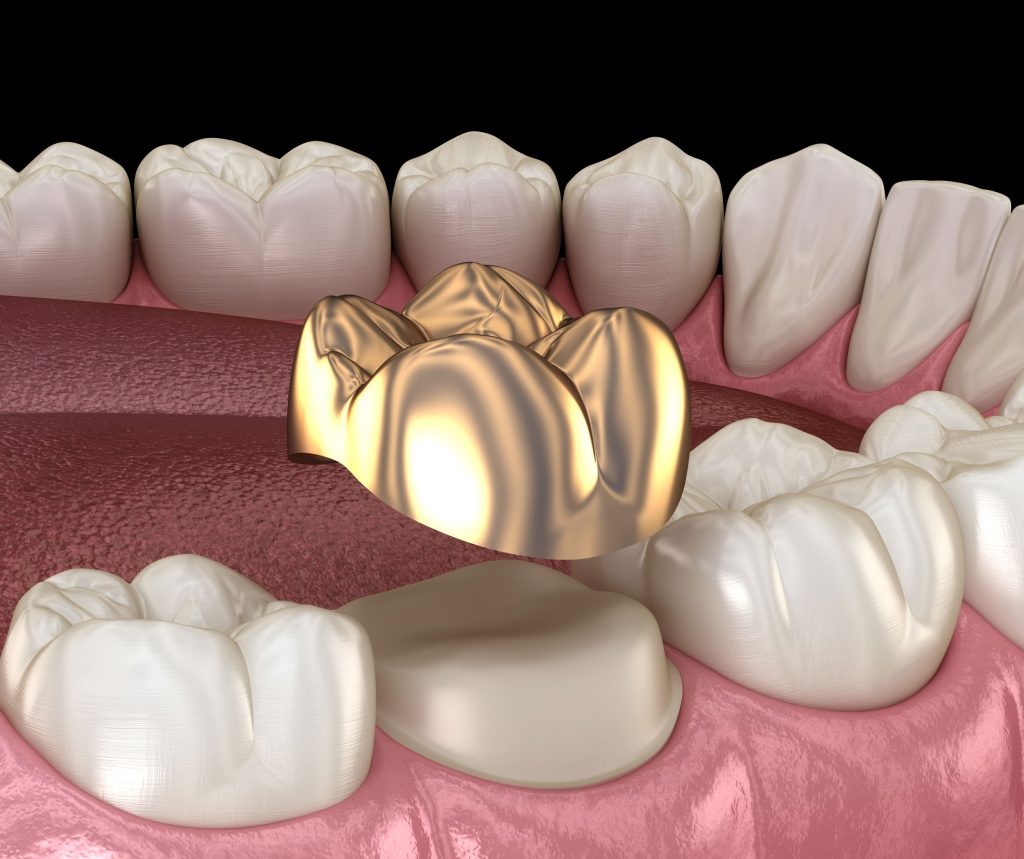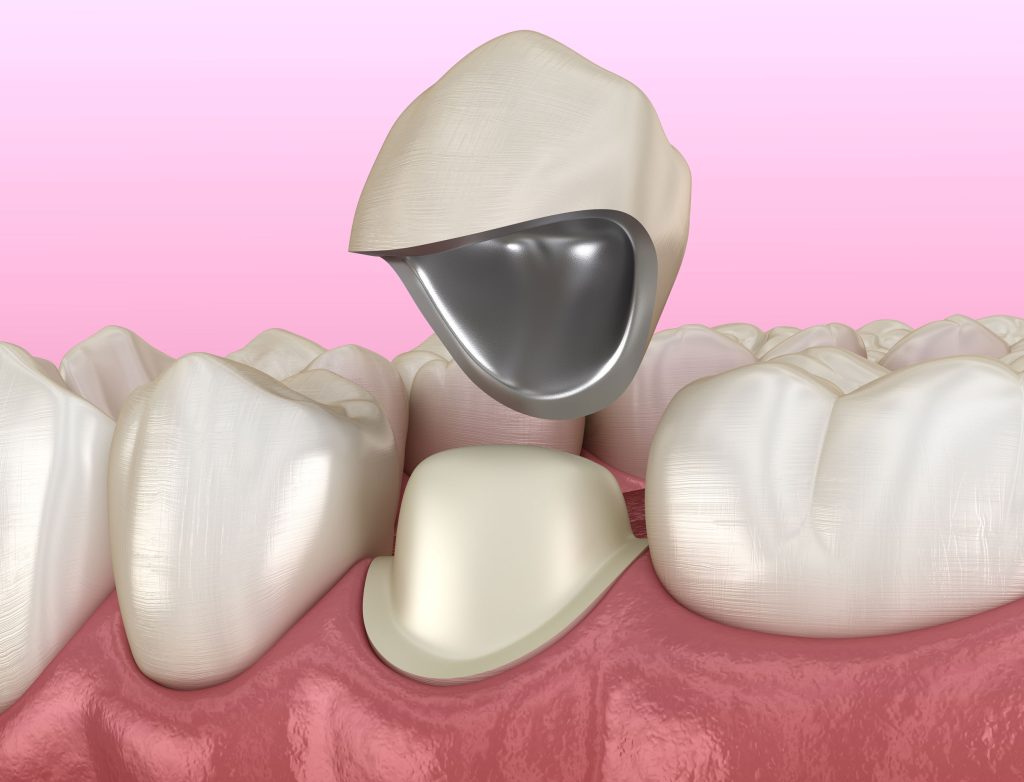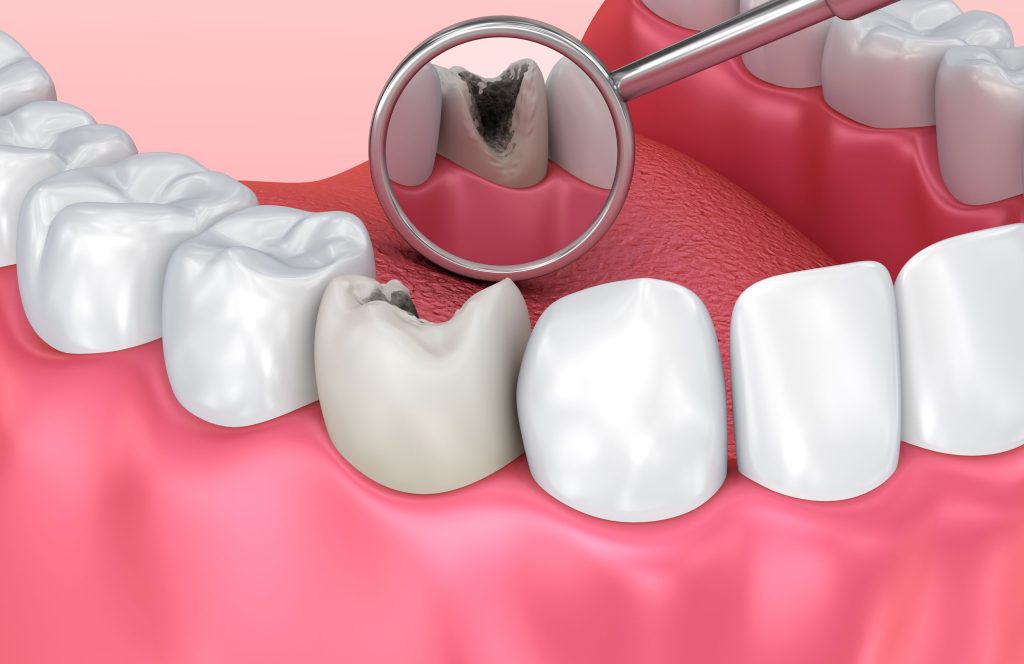Dental Crown Replacement
Explore dental crown replacement options that restore tooth functionality and aesthetics, tailored to meet individual dental needs.
What Are Dental Crowns?
Dental crowns are customised caps designed to cover a tooth entirely. They serve to reinforce teeth that are compromised due to decay, fractures, or significant structural loss. By encasing the visible part of the tooth from the gum line up, crowns help restore the tooth’s original shape, size, and functional integrity. The process involves the removal of a minimal amount of enamel to accommodate the crown securely, ensuring it blends seamlessly with the surrounding dental architecture to enhance both function and aesthetic appeal.
Cost of Teeth Crowning in Singapore
The cost of dental crowns in Singapore hinges on multiple factors. For instance, the choice of material, ranging from porcelain to zirconia, dictates the price, reflecting their aesthetic quality and durability. Additionally, the procedural complexity, including any preparatory treatments such as root canals or necessary dental corrections, can affect costs. Coverage by insurance and the applicability of Medisave can provide financial relief, though conditions apply.
For proper cost determinations and a tailored dental treatment plan, a personal consultation with a dental professional is essential.
Benefits of Getting Dental Crowns Replacement
Dental crown replacement offers a range of benefits aimed at improving oral health and enhancing dental functionality.
Protecting Teeth from Erosion and Wear
Dental crowns provide a robust barrier against erosion and general wear, safeguarding weakened teeth from further deterioration. They encapsulate the entire visible portion of the tooth, shielding it from harsh substances and undue pressures that contribute to wear. This protection is crucial for maintaining the tooth’s integrity and prolonging its functionality.
Addressing Dental Discomfort
Dental crowns play a significant role in mitigating dental discomfort associated with damaged teeth. Whether it’s due to not getting treatment for cracked teeth or worn enamel, crowns could potentially offer some level of relief. By encapsulating the vulnerable tooth, crowns eliminate direct exposure to external stimuli that can cause discomfort.
Permanent Restoration After Root Canal Treatment
No root canal treatment is considered complete without the presence of a permanent crown after the procedure. A crown is necessary after root canal treatment as it provides essential protection and reinforcement for the tooth that has undergone root canal treatment, ensuring its long-term health and function. Most importantly, it prevents leakage from happening, a major source of root canal re-infections.
Enhancing Tooth Appearance
While their primary function isn’t cosmetic, dental crowns can enhance the appearance of teeth. They are crafted to mimic the look of natural teeth, with materials like porcelain offering a close-to-realistic appearance. This ensures that the crown blends seamlessly with the surrounding teeth, enhancing the overall aesthetics of one’s smile without drawing attention to the restoration.
Longevity of Dental Crowns
Dental crowns are designed with longevity in mind, offering a durable solution that could outlast other dental restorations such as fillings or inlays. With proper care, a well-maintained dental crown can provide effective functionality and aesthetic appeal for years, making it a worthwhile investment in long-term dental health.
Improved Speech and Enunciation
In Chinese culture, it’s believed that if there are multiple gaps in the front teeth, their wealth will leak out from their body. Hence, some patients request anterior crowns done to seal up these gaps and symbolically safeguard their prosperity.
Types of Teeth Crowning in Singapore
There are several types of dental crowns available, each suited for different dental needs and aesthetic preferences.
Metal Crowns
Metal crowns, crafted from materials like gold, nickel-chromium or even titanium, are known for their durability. They tend to require minimal tooth preparation before placement and can also withstand the forces of biting and chewing. However, due to their metallic colour, they are typically used for molars at the back of the mouth, where they are less visible.


Porcelain-Fused-to-Metal Crowns
Porcelain-fused-to-metal (PFM) crowns offer a blend of strength and a natural appearance. They are crafted to match the colour of your existing teeth, providing a seamless look. However, over time, the porcelain layer can chip, revealing the metal underneath, and they may cause wear on the opposing teeth due to their abrasive nature. PFM crowns also require more preparation on your tooth compared to metal crowns.
All-Porcelain or All-Ceramic Crowns
All-porcelain or ceramic crowns closely replicate the appearance of natural tooth enamel and are ideal for those seeking a quality aesthetic result or who have allergies to metals. These crowns are mostly made from Lithium Disilicate for anterior teeth or Zirconia for posterior teeth.


All-Resin Crowns
All-resin crowns are an economical option compared to other types of crowns and are often utilised for temporary purposes. While they are less durable and more prone to fractures than other crown types, resin crowns are useful for short-term applications. They typically last only for a few months, providing an interim solution while awaiting a more permanent restoration.
Procedure of Getting Dental Crowns in Singapore
Securing a dental crown involves a structured approach with two primary visits to ensure your tooth receives the optimal treatment and protection.
Initial Examination and Preparation
The dentist conducts an examination of the affected tooth and possibly the adjacent teeth. This step might include taking X-rays to assess the extent of damage or decay. Any necessary moulds of the tooth or entire mouth are also taken during this visit to ensure the crown fits seamlessly with your dental structure.


Tooth Reshaping
To prepare your tooth for a crown, the dentist will carefully shape the tooth and remove a portion of its outer layer. This reshaping is crucial to ensure the crown fits properly and aligns with your bite and other teeth.
Impression Making
Once your tooth is reshaped, the dentist makes an impression of the modified tooth and surrounding teeth. This impression is critical as it will be sent to a dental lab where your crown will be fabricated to match your dental structure.


Temporary Crown Fitting
A temporary crown is placed to protect the reshaped tooth while the permanent crown is being made. This temporary cover helps prevent any discomfort and maintains tooth functionality.
Crown Fabrication
The detailed impressions are sent to a dental lab where technicians craft your crown. This process can take a few weeks, during which your tooth remains protected by the temporary crown.


Permanent Crown Fitting
Upon your return to the dentist’s office, the permanent crown will be ready for fitting. At this appointment, your dentist will carefully remove the temporary crown and securely bond the permanent crown in its place, ensuring a comfortable and natural fit.
Frequently Asked Questions About Teeth Crowning in Singapore
How long do dental crowns last?
Similar to dental bridges, the lifespan of a dental crown varies, typically ranging between seven and fifteen years. Factors like the material used and your oral hygiene habits play a significant role in its longevity.
Does getting a dental crown cause discomfort?
The installation of a dental crown generally causes mild discomfort. Sensitivity, particularly to extreme temperatures, may persist for a few days.
Can dental crowns be replaced?
Yes, dental crowns, just like dental veneers, can be replaced if they become damaged, worn, or knocked off.
How long does it take to get a dental crown?
The timeframe for receiving a dental crown can vary. While the fitting can be completed in a few hours, creating a permanent crown might take longer.
Are there any risks or side effects with dental crowning?
Risks include allergic reactions to materials, increased tooth sensitivity, discomfort, potential for improper fit, chipping, decay at crown margins, gum recession, aesthetic concerns, and the need for eventual replacement due to wear or oral health changes. Regular check-ups are crucial for managing these risks.
